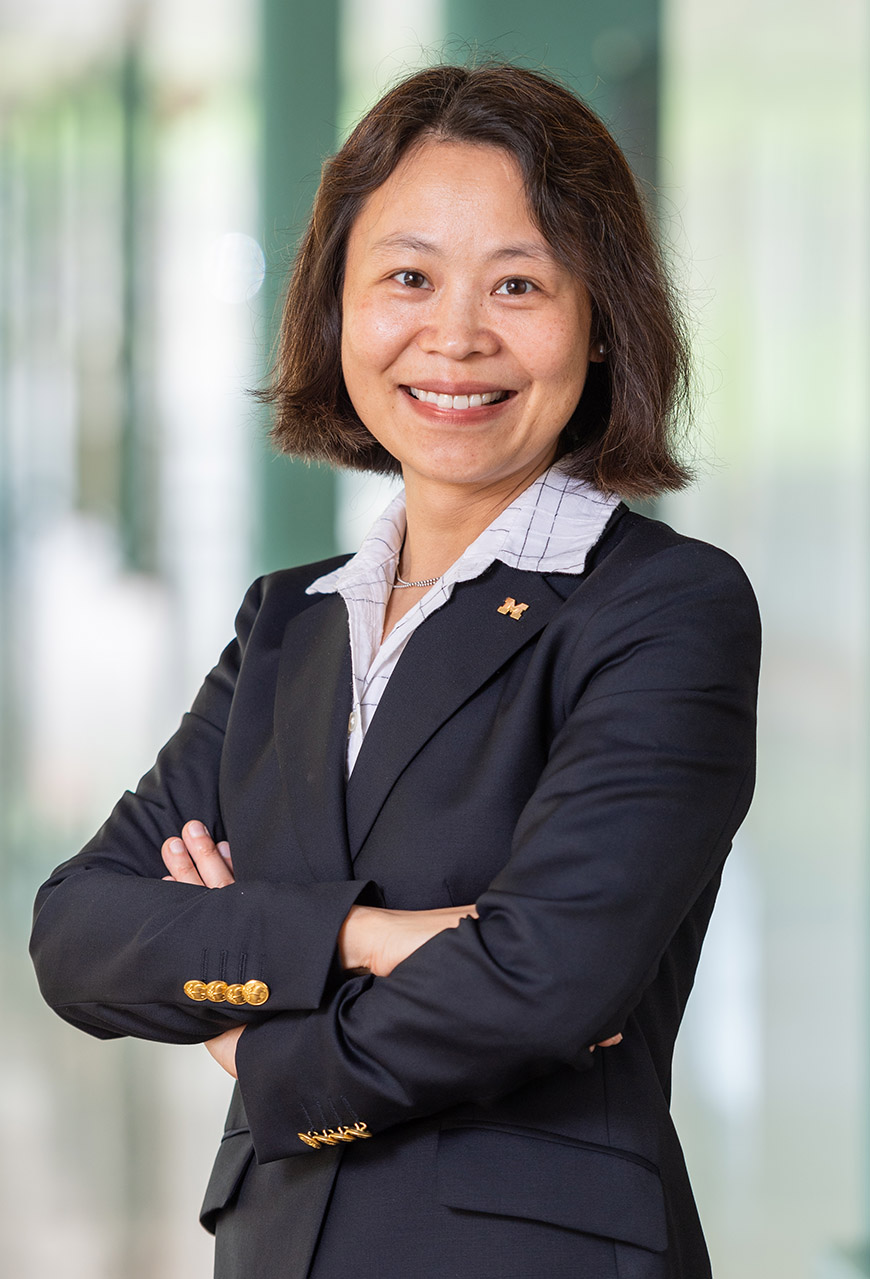Q&A with Mingyan Liu
The incoming electrical and computer engineering chair talks about her vision for the future.

 Enlarge
Enlarge
What is a challenge for the field of electrical and computer engineering that you would like to tackle during your time as chair?
Electrical and computer engineering (ECE) as a discipline has been tremendously successful over the past few decades both in terms of pushing the frontiers of fundamental research and shaping our daily lives. As a direct consequence, it is now so deeply embedded in what we do that it has become invisible even though it is literally everywhere. In the smartphone alone, ECE covers display to sensors to wireless communication to energy management, from hardware to software. Our importance in everyday life only grows over time. But because of this invisibility and the maturity of the technology, electrical and computer engineering departments around the country are facing challenges in attracting undergraduate students. We need to become visible again.
How can you do that?
Through better communication and curriculum innovation, we can convey to students our connections to emerging, exciting applications so that they see the relevance. ECE is one of the very few engineering disciplines that can really prepare a student with the ability to embark on the broadest range of careers, so whatever a student might hope to do eventually, chances are ECE is one of the best choices—if not the best.
We can also help our faculty better showcase the exciting work they are doing and the many technologies they are developing. A lot of what we do in ECE is central to advances in areas as diverse as medical devices, photovoltaic materials, neuromorphic computation, and smart and connected systems, just to name a few. In many of the collaborative projects we do with other disciplines, ECE not only provides the key enabling technology, but is also often the defining ingredient. We really are the Engineering of Everything, and we need to embrace this mindset and be open-minded about what is considered ECE.
That’s a big claim. How do you see that playing out on campus?
Our faculty are uniquely positioned and are already pursuing some of the high-impact applications and emerging problems. This is clear in the leadership of three new major initiatives at the university. One of our faculty members, Professor Al Hero, is a co-director of the Michigan Institute for Data Science, another, Professor Eric Michielssen, co-directs Precision Health. These are university-wide efforts, comprising participants from Michigan Medicine and the College of Literature, Science and the Arts as well as the College of Engineering. The director of Michigan Robotics, Professor Jessy Grizzle, is also from ECE. That, in a nutshell, really shows how broad ECE is and how instrumental it is for pursuing these emerging areas.
How have you embraced interdisciplinary research?
I’ve always been drawn to projects that are intellectually stimulating and have a clear social impact. This often lands me at the boundaries of areas. A lot of interesting things happen when people with different backgrounds are driven together by a common objective that centers on the ultimate social utility and impact.
My own background is communication networks. I have collaborated with faculty in electromagnetics to build an in-situ soil-moisture sensor network for the calibration and validation of remote sensing technology; I’ve collaborated with faculty in civil and environmental engineering in the design and deployment of structural-health-monitoring sensor networks; and most recently, I’ve collaborated with colleagues from computer science on predictive analytics for cybersecurity using Internet measurement data. That has given me a very broad perspective of what ECE represents, what ECE can do, and what more can be done.
Can tech transfer help make ECE more visible?
ECE is already a leader in tech transfer, especially with regard to invention disclosures, patent filing, and launching startup companies. We have a good tradition and a cultural awareness among faculty in terms of tech transfer. But we could certainly do more to help our undergraduate and graduate students participate in entrepreneurship while they are here.
Lately, we have been very closely engaging with the Office of Technology Transfer and the Center for Entrepreneurship to bring our activity in this area to the next level, including closer ties with our alumni and industry. Khalil Najafi, the outgoing chair, and one of our alums, Rick Bolander, just launched the ECE Innovator Program, which will help make these connections. This program is focusing on getting our students and postdocs more involved in tech transfer and providing them with the initial resources to pursue critical next steps – prototyping, market discovery and so on.
Final thoughts?
ECE is both broad and fundamental, and many very exciting things are happening here. We are a natural bridge into many other areas and disciplines. That’s why so many of our faculty are cross-listed with departments such as mechanical engineering and biomedical engineering. At a time where the boundaries between disciplines are constantly evolving, ECE produces the most versatile talents, and that’s something we must continue to emphasize. It’s up to us to define and shape what ECE is.
Learn more about Mingyan Liu by visiting the links below.
 MENU
MENU 
